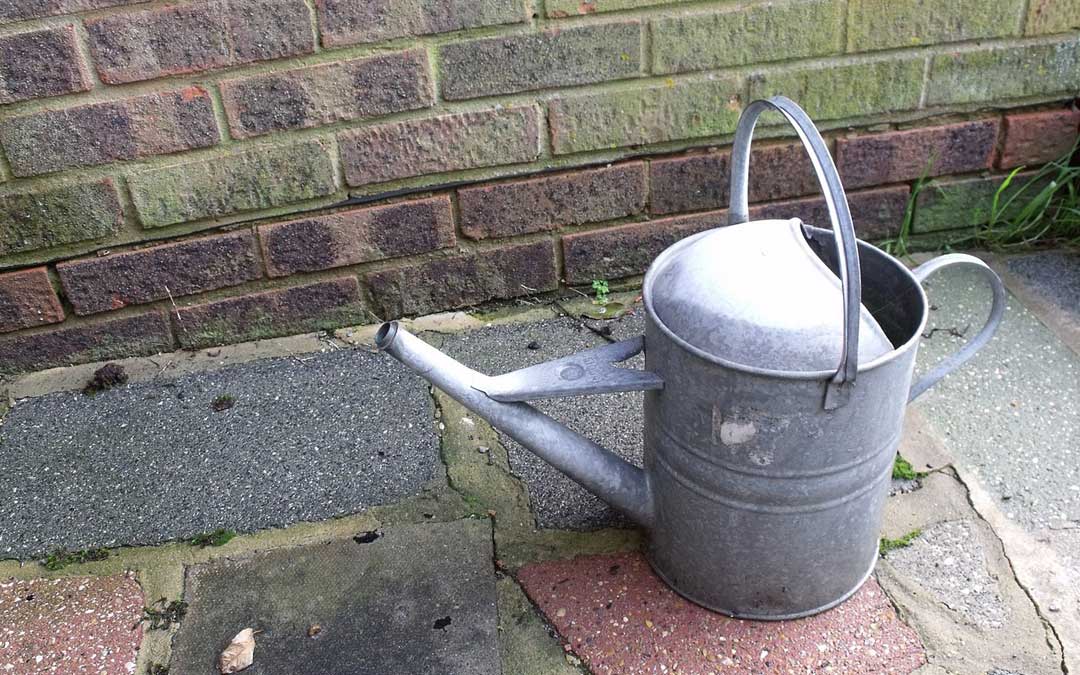Wetting agents for soil: yes or no?

Have you ever tried to wash greasy dishes in hot water without detergent? Nothing much happens until you add a few drops of detergent to the water – then hey presto, clean, sparkling dishes emerge. What causes this is the surfactants in the detergent, and it is the same surfactants that make wetting agents work. However, the story does not end there for the organic gardener, because many surfactants are made of petroleum products that we would not want in our soil (or our sink for that matter).
What is a surfactant?
Firstly the word is a contraction of surface-active agent. It is a chemical compound that alters the surface tension of water. Water-repellent soil allows water to drain straight through the soil profile without wetting it. In the case of soil, a surfactant alters (decreases) the surface tension of water allowing it to penetrate the soil more easily and wet it. It also helps remove the waxy coating on soil particles that build up when soil dries out and becomes water-repellent. To demonstrate this, you can place a drop of plain water onto a piece of cardboard, and then place a drop of water mixed with detergent on the same cardboard. The drop with detergent will sink into the cardboard and spread out, while the plain water droplet will bead and not penetrate. This is what happens with dry soil. Wetting agents allow the soil to become wet, while water results in beading on the surface and does not penetrate or spread.
Surfactants come in 2 types, the first being alcohol or petroleum-based, the second being plant or natural-based. Petroleum-based surfactants are incorporated into most commercial wetting agents and are used extensively in both commercial farming and cheap potting mix, which is predominantly made of pine bark. Petrochemicals are the basis of most synthetic products and are toxic, non-biodegradable and damage the environment. Plant-based surfactants are being biodegradable and natural, non-polluting and eco-friendly making them environmentally safe. Look for ‘plant-based surfactant’ on the label of dishwashing liquid.
These natural organic surfactants come from a range of sources, including seaweed-based ones (algins), soaps and saponins (another word for plants that soap up such as soapwort, soybean and soapbark tree) and microbial wetting agents that work with bacteria.
Jerry Coleby-Williams from Gardening Australia suggests making your own wetting agent from agar agar which is a seaweed product. Buy powdered kelp from a health food shop and slowly incorporate boiling water until you have a thick paste. Add 250ml of this paste to 4.5 litres of water and water this onto beds.*
Another way of making your own wetting agent is to add 3 drops of detergent to 5 litres of water. Make sure that you are using a plant-based detergent that does not have a fragrance as fragrances are often toxic. As Jerry Coleby-Williams says, ‘Australian Standards for biodegradability of detergents applies only to the active ingredients, not to the many additives they contain, like chemical fragrances’.* More is not better in the case of detergent. If the water foams up, add more water until the foam disappears.
I have found that digging over the soil and applying a wetting solution 3 times works well, you then need to water the beds regularly, especially those that are lying fallow (unplanted).
At this time of year (March) in Melbourne the weather is hot and dry and usually there is little rain. Unless the soil is watered regularly, it becomes hydrophobic and can be a nightmare to rehydrate. Just watering it will not do the trick as a quick dig under the surface will reveal. Using a plant-based wetting agent is important to prepare hydrophobic beds for autumn planting. Crops need to be planted in well-hydrated soil to thrive. Crops such as garlic and brassicas will not draw in enough water through their root system if planted in dry soil, no matter how much water you pour on. The results will be poor, with small garlic heads at harvest and brassicas running to seed.
There are very few organic wetting agents on the market and they are not cheap. Making your own wetting agent is straightforward and inexpensive, and you know exactly what has gone into it. Now is the time to amend your soil with organic inputs such as compost, aged manures and wetting agents so that it is moist and receptive to new plantings.
References
*Jerry’s article is well worth the read as it goes into details that space limits preclude me from including.
There is an excellent section on which mulches cause hydrophobia in soils and which do not.
This article explains more about the chemical structure and classification of surfactants.
Plant-Derived Saponins: A Review of Their Surfactant Properties and Applications. This is an academic paper of interest to those who want to know more details about the value of plant-based surfactants and the danger of petroleum-based ones. It also contains lists of plant saponins.
Written by Robin Gale-Baker
